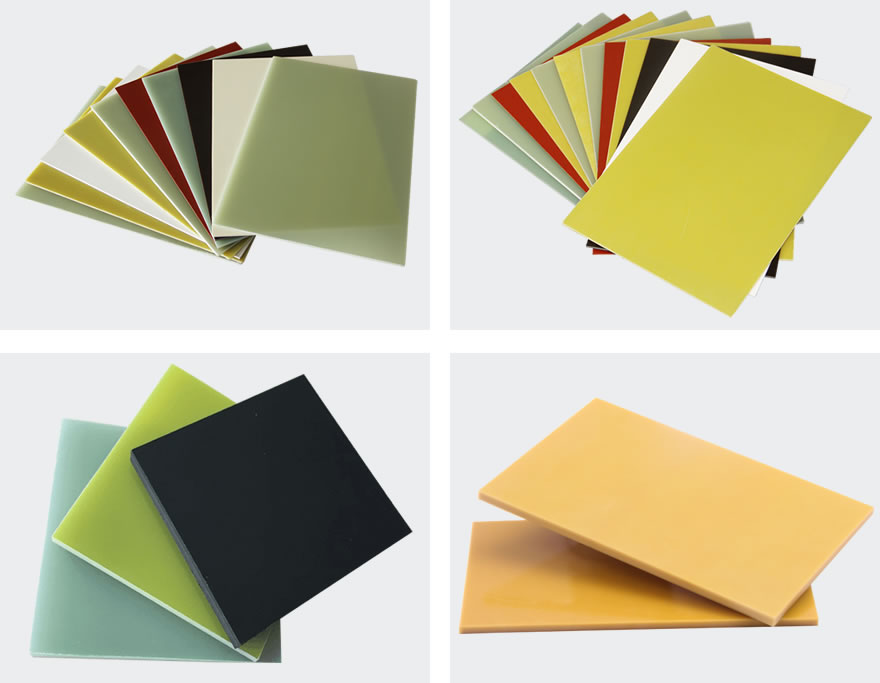Difference between bakelite and epoxy board First of all, to know the difference between bakelite and epoxy board, y...
First of all, to know the difference between bakelite and epoxy board, you must first understand the characteristics of these two boards. These two boards are the most commonly used boards in industry and are particularly widely used. Let’s give a detailed introduction to these two boards to understand their respective characteristics and applications.

Bakelite is a synthetic paperboard and a plastic product. Bakelite is also called bakelite or discharge board. Its professional name is bakelite phenolic laminated paperboard. It is a phenolic resin made by reacting high-purity, fully synthetic petrochemical raw materials, and then made of wood board through resin adhesive. It is actually a kind of artificial synthetic chemical substance. After it is heated and formed, it will solidify and cannot be formed into other things. Because bakelite has the characteristics of insulation, non-absorption, non-static electricity, wear resistance and high temperature resistance, it is used for insulating switches of electronic products, variable resistors, molds or jigs on production lines, and can also be used in transformer oil. Its room temperature electrical properties are good, the specific gravity is about 1.45, the warpage is ≤3‰, and it has good electrical and processing properties. It can be said that the most common one is bakelite, which is also the most widely used industrial laminate. It is suitable for use in motors and electrical equipment with high mechanical performance requirements.

Epoxy board is also called epoxy glass fiber board, epoxy phenolic laminated glass cloth board, and epoxy resin refers to an organic polymer compound containing two or more epoxy groups in the molecule. Except for a few, their relative molecular mass is not high. The molecular structure of epoxy resin is characterized by the presence of active epoxy groups in the molecular chain. The epoxy groups can be located at the end, middle or in a ring structure of the molecular chain. Because the molecular structure contains active epoxy groups, they can react with various types of curing agents to form insoluble, infusible polymers with a three-dimensional network structure.
Epoxy board, which is made of glass fiber cloth bonded with epoxy resin and heated and pressed, has high mechanical properties at medium temperature and stable electrical properties at high humidity. It is suitable for high-insulation structural parts for machinery, electrical appliances and electronics, with high mechanical and dielectric properties and good heat resistance and moisture resistance. Heat resistance grade F (155 degrees). Specification thickness: 0.5~100mm, heat deformation at high temperature of 180℃, generally not heated together with other metals, may cause deformation of metal sheets.

Epoxy board (FR-4) features: has high mechanical and dielectric properties, good heat resistance and moisture resistance, and good machinability.
First, the materials are different. The reinforcing material of epoxy resin board is glass fiber cloth, and bakelite uses wood pulp paper; second, the physical properties of the board are different, such as the hardness of epoxy resin board is greater than that of bakelite board, and the bending strength and heat resistance are also excellent. Bakery board is more suitable for cold punching; third, the electrical properties are different, such as the surface/volume resistance of epoxy resin board is better.
Epoxy board: has high mechanical and dielectric properties, good heat resistance and moisture resistance.
Bakelite board: has the characteristics of insulation, no static electricity, wear resistance and high temperature resistance. Epoxy board has higher density than bakelite board.
1. Color: bakelite is darker, dark brown or brown, while epoxy board is light yellow or white.
2. Density: bakelite has a higher density and feels slightly heavy, while epoxy board is lighter and feels light.
3. Surface: bakelite surface is relatively smooth and has a certain glossiness, while epoxy board surface is relatively rough and has strong anti-slip properties.
4. Quality: bakelite is harder, relatively fragile and brittle, while epoxy board is relatively light, relatively soft and strong.
Due to the complex material composition and production process of epoxy board, its production cost is relatively high. Bakery board is relatively cheap and has a lower production cost.
In general, although epoxy board and bakelite are both insulating materials, there are still great differences between them. When choosing to use, you need to choose according to the specific purpose and requirements.
If you are interested in our products,, please send us a message and we will contact you as soon as we receive it. Email: info@ztaero.com whatsApp: +8616650273778